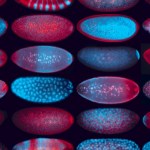iGEM
"The history of any given technology is extraordinarily complex."
--Rob Carlson, Biology is Technology.
Analyzing the history of a technology requires a complex look at the social, economic, and political context in which it emerged, and the reciprocal influences that the developing technology exerts on these factors. Predicting what the future of a technology will be like, how it will affect the economy and understanding the potential risks and payoffs is much much harder. Rob Carlson's new book, Biology is Technology: The Promise, Peril, and New Business of…
Things are gearing up for iGEM 2010, and in looking through some of the incredible work of the 2009 teams, I remembered the University of Washington Software team, who made an awesome lego robot that can move small volumes of liquid around in 96-well plates, a crucial and typically very expensive task in high-throughput biology. What makes the team especially remarkable is that the only member is an 11 year old kid, Gabriel See, who designed and built the robot on his own. Gabriel had the flu during the jamboree, so he unfortunately couldn't fly to MIT to share his work, but he did get his…
Groups of individuals (from molecules to cells to animals) following simple rules and responding to environmental cues will create the amazingly complex emergent behaviors we see in nature, making cells, bodies, and societies far more than the sum of their parts. Each individual acts without knowing what the final outcome will be, whether it's birds flying in formation, termites building intricate underground tunnels, or human societies building cities and networks. At a molecular level, one of the most striking examples of emergent behavior is embryonic body pattern formation. Every cell in…
iGEM is all about synthetic biology, kids. It's the annual International Genetically Engineered Machine competition.
Each team in the IGEM competition has to make something using a kit of biological parts from the Registry of Standard Biological Parts. Teams of students use these parts to design, build, and operate biological systems in living cells.
IGEM began in 2003 with a course at MIT where students made cells blink. Now, this year had:
1200 participants,
84 teams,
and 24 awards.
Amazingly, two of those awards went to a team (UCSF) composed mostly of students from a public high…
This story reminds me of those days not so long ago when I was teaching molecular biology to a small group of motivated and talented high school sophomores and juniors. Basically, a group of high school biotechnology seniors from Abraham Lincoln High School in San Francisco, California, were invited to participate in the international Genetically Engineered Machine competition (iGEM), hosted at the Massachusetts Institute of Technology. iGEM focuses on the hot new field of synthetic biology: this field genetically manipulates proteins and other molecules that are constructed by living cells…

